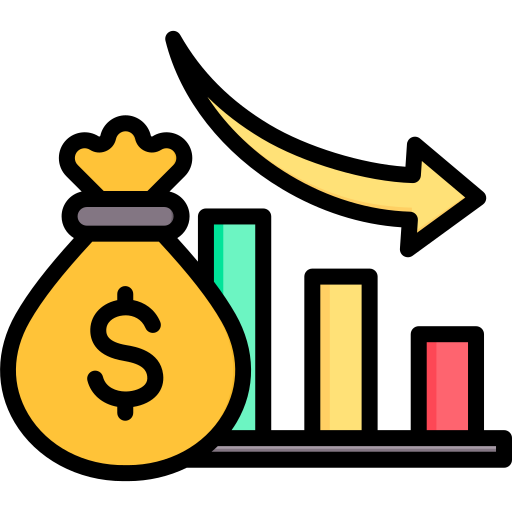Verified Insights
Precision-driven research you can trust. We uphold rigorous data validation processes to ensure every report is reliable and based on credible sources.
+91 9425150513 (Asia) +1(332) 2424 294 (Int'l) help@24lifesciences.com
MARKET INSIGHTS
Global Sodium Lactated Ringer's Injection market was valued at USD 1.2 billion in 2024 and is projected to reach USD 1.8 billion by 2032, exhibiting a CAGR of 5.1% during the forecast period. The U.S. market accounted for approximately 35% of global revenue in 2024, while China is anticipated to grow at a faster pace with a projected CAGR of 6.3% through 2032.
Sodium Lactated Ringer's Injection is a sterile, non-pyrogenic electrolyte solution containing sodium chloride, sodium lactate, potassium chloride, and calcium chloride in water for injection. It is primarily used for fluid and electrolyte replenishment in patients suffering from dehydration or blood loss, commonly administered in hospital and clinical settings. The solution maintains physiological pH and provides essential ions to support metabolic functions.
The market growth is driven by increasing surgical procedures worldwide, rising prevalence of chronic diseases requiring fluid therapy, and expanding healthcare infrastructure in developing regions. Packaging innovations such as non-PVC soft bags, which accounted for 42% of the market in 2024, are gaining traction due to their improved safety and convenience. Major players including Baxter, B.Braun, and Fresenius Kabi dominate the competitive landscape through continuous product innovation and strategic acquisitions.
Rising Surgical Procedures and Trauma Cases Fueling Market Expansion
The global sodium lactated Ringer's injection market is experiencing significant growth driven by the increasing number of surgical procedures and trauma cases worldwide. With over 310 million major surgeries performed annually, the demand for fluid replacement therapy has surged dramatically. Sodium lactated Ringer's solution, being one of the most physiologically compatible IV fluids, is widely used for perioperative fluid management. Its balanced electrolyte composition closely matches human plasma, making it ideal for maintaining hemodynamic stability during procedures. The growing emphasis on patient safety protocols in surgical settings has further boosted adoption rates, with many hospitals now standardizing its use across multiple surgical specialties.
Growing Geriatric Population Creating Sustained Demand
Demographic shifts toward an aging population represent a powerful driver for the sodium lactated Ringer's injection market. The global population aged 65+ is projected to reach 1.5 billion by 2050, with this demographic accounting for over 40% of all hospital admissions. Elderly patients frequently require IV fluid therapy for conditions like dehydration, chronic kidney disease, and postoperative care. Sodium lactated Ringer's solution is particularly favored for geriatric patients due to its lower risk of metabolic acidosis compared to normal saline. Healthcare systems worldwide are scaling up their inventories to meet this growing demand, with long-term care facilities increasingly stocking these solutions as part of standard protocols.
Advancements in Packaging Technology Enhancing Market Growth
Innovations in IV solution packaging are significantly contributing to market expansion. The shift from traditional glass bottles to advanced non-PVC soft bags has improved product safety, storage efficiency, and ease of administration. Non-PVC soft bags now account for over 65% of the total packaging segment, with their advantages including reduced contamination risks and improved portability. Major manufacturers have invested heavily in developing next-generation packaging solutions with integrated safety features. These technological improvements have not only increased healthcare provider preference but also extended shelf life and reduced transportation costs, making sodium lactated Ringer's injections more accessible in emerging markets.
Stringent Regulatory Requirements Slowing Market Penetration
While the market shows strong growth potential, stringent regulatory frameworks present significant barriers to entry and expansion. Pharmaceutical-grade IV solutions must comply with rigorous quality standards across multiple jurisdictions, with approval processes often taking 18-24 months. The complexity increases for multinational manufacturers who must navigate varying pharmacopeia standards between regions. Recent enhancements to Good Manufacturing Practice (GMP) requirements have led to increased production costs, with compliance investments sometimes exceeding 30% of operational budgets for smaller manufacturers. These regulatory hurdles particularly impact market growth in developing regions where local producers struggle to meet international quality benchmarks.
Price Sensitivity in Emerging Markets Limiting Premium Product Adoption
The sodium lactated Ringer's injection market faces challenges from price sensitivity, especially in developing economies where healthcare budgets are constrained. While advanced formulations and packaging command premium prices in developed markets, cost-conscious buyers in emerging economies often opt for basic saline solutions or locally produced alternatives. Government tender processes in many countries prioritize lowest-cost bidding, creating intense price competition that squeezes profit margins. This economic pressure has slowed the adoption of innovative products in price-sensitive markets, despite their clinical advantages. Manufacturers must balance product improvements with cost considerations to remain competitive across different economic environments.
Logistical Challenges in Cold Chain Maintenance
Maintaining product integrity during distribution presents ongoing challenges for market players. Sodium lactated Ringer's solutions require strict temperature control throughout the supply chain, with deviations potentially compromising sterility and stability. Developing robust cold chain infrastructure adds approximately 15-20% to distribution costs, particularly in regions with unreliable power supplies or underdeveloped transportation networks. These logistical complexities have hindered market expansion in rural areas and tropical climates where maintaining proper storage conditions proves difficult. Manufacturers are investing in innovative packaging solutions and regional distribution hubs to address these challenges, but significant infrastructure gaps remain in many markets.
Expansion in Home Healthcare Settings Presents Untapped Potential
The rapid growth of home healthcare services offers substantial growth opportunities for sodium lactated Ringer's injection providers. With home IV therapy becoming increasingly common for chronic conditions and post-acute care, demand for patient-friendly formulations has surged. Manufacturers are developing smaller, easier-to-use containers with safety features specifically designed for home administration. The home healthcare IV solutions market is projected to grow at nearly double the rate of hospital-based products, creating new channels for market expansion. Strategic partnerships with home care providers and durable medical equipment suppliers are helping manufacturers capitalize on this emerging segment.
Customized Formulations for Specialized Treatments
Development of specialized formulations presents significant opportunities for product differentiation and premium pricing. There is growing interest in tailored electrolyte solutions for specific clinical scenarios such as pediatric care, oncology treatments, and sports medicine. Some manufacturers have begun offering customized additive options, allowing healthcare facilities to modify standard formulations for particular patient needs. This trend toward personalized fluid therapy aligns with broader movements in precision medicine, creating avenues for innovation and value-added services. Companies investing in R&D for condition-specific formulations are well-positioned to capture higher-margin niche markets within the broader IV solutions sector.
Emerging Markets Offer Substantial Growth Prospects
Developing economies represent the most promising growth frontier for sodium lactated Ringer's injection providers. Healthcare infrastructure improvements in Asia, Africa, and Latin America are driving increased adoption of standardized IV therapies. Government initiatives to expand access to essential medicines have created favorable market conditions, with some countries reporting annual growth rates exceeding 15% for basic IV solutions. Local manufacturing partnerships and technology transfers are helping global players establish footholds in these high-potential markets while addressing cost sensitivity challenges. The growing middle class in emerging economies also presents opportunities for premium product lines in private healthcare settings.
Supply Chain Vulnerabilities Impacting Product Availability
The sodium lactated Ringer's injection market faces ongoing challenges from global supply chain disruptions. Critical raw materials like pharmaceutical-grade sodium chloride and lactate often experience price volatility and availability fluctuations. The COVID-19 pandemic exposed vulnerabilities in international supply networks, with some regions experiencing stockouts of basic IV solutions. These disruptions have prompted manufacturers to reevaluate sourcing strategies, with many increasing safety stock levels or pursuing regional supplier diversification. However, maintaining adequate inventory buffers comes with significant carrying costs that impact overall profitability in this price-sensitive market.
Intense Competition from Alternative Fluid Therapies
Market growth faces pressure from competing fluid replacement options, particularly balanced crystalloid solutions and colloids. While sodium lactated Ringer's remains the gold standard for many applications, newer formulations with specialized electrolyte profiles are gaining traction in certain clinical settings. The debate around optimal fluid therapy continues within the medical community, with some institutions adopting practice guidelines that favor alternative solutions for specific indications. Manufacturers must continually demonstrate the clinical and economic value proposition of their products to maintain market share against these competing therapies.
Product Differentiation Difficulties in Commoditized Market
Creating meaningful product differentiation presents an ongoing challenge in this largely commoditized market. While packaging innovations and specialized formulations offer some differentiation opportunities, the core therapeutic benefits of sodium lactated Ringer's solutions remain consistent across manufacturers. This makes brand loyalty difficult to maintain and increases pressure on pricing strategies. Companies are investing in value-added services like inventory management systems and clinical education programs to distinguish their offerings, but these strategies require significant investment with uncertain returns in highly price-sensitive market segments.
The global healthcare sector is witnessing a surge in demand for intravenous fluid therapies, particularly Sodium Lactated Ringer's Injection solutions, due to their critical role in fluid resuscitation and electrolyte balance management. This demand is being fueled by rising surgical procedures, trauma cases, and chronic disease management protocols. The market has seen consistent growth, with projections indicating a compound annual growth rate (CAGR) of approximately 4-6% through 2032. This steady increase underscores the product's essential nature in clinical settings, especially in emergency medicine and postoperative care where maintaining proper hydration and pH levels is paramount.
Packaging Innovations
Non-PVC soft bag packaging solutions are gaining prominence in the market, projected to reach significant valuation in coming years with a notable growth rate. This shift is driven by healthcare providers' increasing preference for environmentally sustainable and user-friendly packaging options that reduce contamination risks. While polypropylene bottles currently maintain significant market share, the flexibility and safety features of stand-up infusion bags are making them increasingly popular in hospital settings. These packaging advancements align with broader healthcare industry efforts to improve patient safety and procedural efficiency.
Key manufacturers are strategically expanding their presence in developing regions, particularly across Asia and Latin America, responding to improving healthcare infrastructure and increasing medical procedure volumes. China's market is demonstrating particularly strong growth potential, expected to mirror global trends while adapting to local regulatory environments. Regional pharmaceutical companies are forming strategic partnerships with global players, creating a competitive landscape that blends international expertise with local market knowledge. This localization trend is particularly evident in pricing strategies and product formulations tailored to regional clinical preferences and regulatory requirements.
The market continues to evolve in response to stringent regulatory standards for intravenous solutions, particularly regarding sterility and composition specifications. Recent years have seen increased scrutiny on manufacturing processes, leading to more robust quality control measures across production facilities. Simultaneously, supply chain optimization has become a key focus area, with manufacturers implementing strategic inventory management systems to ensure consistent availability of these critical medical products. The COVID-19 pandemic underscored the importance of resilient supply chains, prompting industry players to diversify production locations and supplier networks.
Market Leaders Focus on Product Innovation and Strategic Collaborations
The global Sodium Lactated Ringer's Injection market exhibits a semi-consolidated competitive structure, with multinational pharmaceutical giants, regional manufacturers, and specialized players competing for market share. Baxter International Inc. and Fresenius Kabi dominate the landscape, collectively accounting for a substantial portion of global revenue due to their extensive distribution networks and diverse product portfolios. These industry frontrunners continue to invest in advanced intravenous solutions, particularly in the rapidly growing Non-PVC Soft Bag Packaging segment.
B.Braun Melsungen AG maintains strong market positioning through continuous R&D investments, particularly in Europe and emerging Asian markets. Meanwhile, Abbott Laboratories has recently expanded its production capacity in North America to meet rising post-pandemic demand for critical care solutions, including Sodium Lactated Ringer's formulations.
Chinese manufacturers like Sichuan Kelun Pharmaceutical and CR Double-Crane are gaining traction through competitive pricing strategies and government-supported healthcare initiatives. Their growing emphasis on stand-up polypropylene infusion bags demonstrates the industry's shift toward more convenient and safer packaging alternatives.
The market also sees active participation from Japanese pharmaceutical firm Otsuka Pharmaceutical, which has been strategically acquiring smaller regional players to strengthen its APAC foothold. This aligns with broader industry trends where consolidation through mergers and acquisitions remains a key growth strategy among mid-tier competitors.
Non-PVC Soft Bag Packaging Dominates the Market Due to Superior Safety and Eco-Friendly Properties
The market is segmented based on packaging type into:
Hospital Segment Leads Due to High Volume Usage in Critical Care and Surgical Procedures
The market is segmented based on application into:
Adults Segment Holds Majority Share Due to Higher Incidence of Dehydration-Related Conditions
The market is segmented based on end user into:
Hospital Pharmacies Lead the Distribution Network Due to Direct Procurement Systems
The market is segmented based on distribution channel into:
North America
The U.S. dominates the North American market for Sodium Lactated Ringer's Injection, accounting for the largest regional share due to advanced healthcare infrastructure and high adoption of intravenous therapies. Rising surgical procedures and emergency care needs drive demand, with hospitals being the primary end-users. Non-PVC soft bag packaging is gaining traction as healthcare facilities transition toward more environmentally sustainable options. Stringent FDA regulations ensure product quality and safety, but also create barriers for new market entrants. Major players like Abbott and Baxter maintain strong positions through continuous product innovation and strategic partnerships with healthcare providers.
Europe
Germany and France lead the European market, supported by universal healthcare systems and strict adherence to EU medical standards. The region shows preference for polypropylene plastic bottle packaging due to its stability and recyclability. Growing geriatric populations and increasing hospital admissions contribute to steady market growth. However, price controls under national healthcare systems limit profit margins for manufacturers. Recent emphasis on antimicrobial-resistant solutions presents new opportunities for product differentiation. Market consolidation is evident as mid-sized players seek mergers to compete with multinational corporations.
Asia-Pacific
China and India represent the fastest-growing markets, fueled by expanding healthcare access and rising disposable incomes. The region shows particularly strong demand for stand-up polypropylene infusion bags due to space efficiency in crowded healthcare facilities. Local manufacturers like Sichuan Kelun Pharmaceutical dominate price-sensitive segments through cost-effective production, while international brands target premium hospital networks. Challenges include fragmented distribution channels and varying quality standards across countries. Government initiatives to upgrade rural healthcare infrastructure are creating substantial growth opportunities in tier-2 and tier-3 cities.
South America
Brazil maintains the largest market share in the region, though economic instability periodically disrupts supply chains and purchasing patterns. Products tend to focus on essential rather than premium features due to budget constraints in public healthcare systems. Competition from local generic manufacturers keeps prices low, forcing multinational companies to adapt their strategies. Recent investments in hospital modernization projects indicate potential for market expansion, particularly in urban centers. Regulatory harmonization efforts across MERCOSUR countries could facilitate easier market access in the coming years.
Middle East & Africa
The GCC countries, particularly Saudi Arabia and UAE, demonstrate the strongest growth potential with their expanding private healthcare sectors and medical tourism industries. Demand remains concentrated in urban hospitals, with rural access still limited. Temperature stability challenges in hotter climates drive innovation in packaging solutions. Political uncertainties and reliance on imports in many African nations create supply chain vulnerabilities. Nevertheless, increasing health expenditure and infrastructure development projects suggest promising long-term prospects for market expansion across the region.
This market research report offers a holistic overview of global and regional markets for the forecast period 2025–2032. It presents accurate and actionable insights based on a blend of primary and secondary research.
✅ Market Overview
✅ Segmentation Analysis
✅ Regional Insights
✅ Competitive Landscape
✅ Technology & Innovation
✅ Market Dynamics
✅ Opportunities & Recommendations
✅ Stakeholder Insights
This report is designed to support strategic decision-making for a wide range of stakeholders, including:
-> Global Sodium Lactated Ringer's Injection market was valued at USD 1.2 billion in 2024 and is projected to reach USD 1.8 billion by 2032, exhibiting a CAGR of 5.1% during the forecast period.
-> Key players include Abbott, B.Braun, Baxter, Fresenius Kabi, Pfizer, Chimin Health Management, CR Double-Crane, Sichuan Kelun Pharmaceutical, Cisen Pharmaceutical, and SJZ No.4 Pharmaceutical, among others. The top five players accounted for approximately 45% of global revenue in 2024.
-> Key growth drivers include rising surgical procedures, increasing prevalence of dehydration-related disorders, expansion of healthcare infrastructure in emerging markets, and growing adoption of intravenous fluid therapy.
-> North America currently leads the market with 38% revenue share, while Asia-Pacific is expected to be the fastest-growing region with a projected CAGR of 6.8% through 2032.
-> Emerging trends include development of eco-friendly packaging solutions, smart IV infusion systems integration, and increasing adoption of automated compounding technologies in production facilities.
Our Clients
“The data provided by 24LifeScience was clear, well-organized, and useful for internal strategy planning. It helped us understand the competitive landscape more effectively.”
“We used one of their market overview reports for early-stage feasibility work. It gave us a helpful snapshot of current trends and key players in our therapeutic area.”
“I appreciated the team’s responsiveness and willingness to adjust the scope based on our feedback. The final report was aligned with our expectations and timelines.”
“Their custom report on clinical trial trends was a helpful reference as we explored new indications."
“As someone working on early product planning, I found their therapeutic area briefs quite useful. The information was presented in a way that made it easy to extract key takeaways.”
“We didn’t need anything overly complex—just solid, dependable data. 24LifeScience delivered exactly that, without unnecessary fluff.”
“Their reports gave us a good foundation to start our own market assessment. While we supplemented it with other data, this was a great starting point.”
“I’ve used a few of their reports for academic and grant writing purposes. They’re generally well-cited and reliable for understanding market scope.”
At 24LifeScience, we combine domain expertise with dependable research delivery. What truly differentiates us isn't just what we do — it's how we do it. Our clients trust us because we offer consistency, security, value, and most importantly, insight that drives action.

Precision-driven research you can trust. We uphold rigorous data validation processes to ensure every report is reliable and based on credible sources.

We uphold rigorous data validation processes to ensure every report is reliable, up-to-date, and based on credible sources.

24LifeScience powers research for top firms in 20+ nations.Chosen by leading life sciences companies worldwide.

We offer competitive pricing models that align with your project scope — no hidden charges, no lock-in. Tailored pricing for every scale and need.

8–10+ years of life sciences expertise turned into strategic insights.We don’t just summarize data we contextualize it.

Whether it's a ready-made report or a custom project, we deliver within the promised timeline With real-time updates